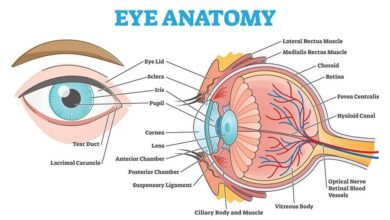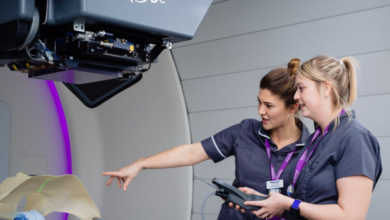Laser treatment: The 5 most chosen applications and how effective they really are

Choosing laserbehandeling should feel clear, not cryptic. you want to know what it does, how well it works, and whether it fits your skin. At NDN.LASER, we start with your biology first skin tone, target, and recovery window then match the device and settings to the job. Below, you will find the five applications clients ask for most, what “good” results look like, and the practical details that separate hype from real world outcomes.
Pigmentation (sun spots, tone irregularities)
Brown spots are common, but not all pigment behaves the same. Discrete sun spots (lentigines) usually respond quickly when the wavelength is well matched to melanin and the passes are measured. Melasma and post inflammatory marks are more reactive; they need gentler energy, longer spacing, and strict sun control. With an appropriate laser treatment, lentigines often lighten noticeably within one to two visits; reactive pigment brightens more gradually across several sessions. The headline: precision beats power. Choose controlled energy, consistent photography, and a plan that pairs treatment with SPF discipline.
See also: Emergency Ambulance and Its Role in Healthcare
Hair reduction (face and body)
The goal here is long, calm gaps between any upkeep. Hair grows in cycles; only follicles in the active phase respond on the day of your laser treatment, which is why a series matters. Body zones generally sit at 6-8 week intervals, while facial areas do better at 4-6. Expect a big “shed” early on, then slower, finer regrowth that becomes easier to manage. With the right wavelength for your tone and good cooling most people achieve a durable 80-90% density drop on many body areas. When maintenance is needed, it is typically a short, selective pass once or twice a year.
Tattoo and PMU fade (including multicolour work)
Pigment chemistry is the puzzle here. Black and navy absorb one band of light well; reds, oranges, greens and teals need different wavelengths. That is why the most efficient laser treatment plan stages colours: 1064 nm for blacks/navies, a shorter band for reds/oranges, and another for greens/teals. Picosecond pulses can help with dense, layered ink by creating a stronger photoacoustic effect with less thermal spread. Real world timelines range from six to twelve visits depending on size, colour mix, depth, and location. If your goal is a new piece, “fade to a safe canvas” often needs fewer sessions than total erasure.

Safety and suitability across skin tones
Melanin also absorbs light, so parameters must respect darker complexions. Deeper penetrating wavelengths, longer pulse widths where appropriate, and robust cooling widen the safety margin. With careful planning, a laser treatment can be both effective and skin kind from Fitzpatrick I through VI. This is also where honest spacing helps: Results happen between visits as your biology finishes the job.
What to expect on treatment day
Arrive with clean, product free skin. We map the target under fixed light and, if it is your first time, run a tiny test spot to read your skin’s behaviour. The session itself feels like quick, hot “snaps,” followed by cooling that calms the surface. Small areas (underarms, single sun spots) take minutes; larger zones are done in steady sections so comfort stays predictable. After a laser treatment, most people can return to desk work the same day; give heat trapping kit and pools a short pause.
How many sessions really?
It depends on your target, not just your calendar. Pigment spots: often one to three. Hair reduction: a series spaced by growth cycles. Vessels: one to three for small facial threads. Texture: several lighter passes or fewer deeper ones, traded against downtime. Tattoos and PMU: staged by colour and depth. The common theme is pacing stacking sessions too tightly adds irritation without buying faster clearance.
Recovery that keeps results on track
Good recovery is simple: cool in short intervals the first evening, cleanse with lukewarm water and a very gentle, fragrance free wash, pat dry, and seal with a bland moisturiser. Treat sun as the deal breaker broad spectrum SPF 50 and real shade on exposed skin for the entire course and several weeks after each visit. Actives like retinoids and strong acids take a brief holiday; your clinician will tell you when to reintroduce them. With this approach, a laser treatment becomes a smooth hand off from clinic to biology.
Reading “effectiveness” like a realist
A dramatic day after photo is not the whole story. What counts is steady change in fixed light images, skin that stays calm between visits, and an endpoint that matches your goal (clear, faded, or refined). For hair, that means months of easy living and rare maintenance. For pigment and vessels, it is targeted clearing without tone backlash. For texture, it is better light reflection and softer edges. For tattoos, it is a clean fade without unnecessary trauma. A well designed laser treatment course prioritises these outcomes over speed for its own sake.
One practical checklist (the only list you need)
- Shave hair in treated zones 24 hours before hair reduction sessions; avoid waxing/tweezing for 4+ weeks.
- Pause harsh scrubs, retinoids and strong acids 48 hours before and after any laser treatment unless told otherwise.
- Protect daily with SPF 50 on exposed areas; add a real brim hat and shade when outdoors.
- Space visits as advised (typically 4-6 weeks face; 6-8 weeks body; pigment and texture may need longer).
- Keep aftercare gentle: cool, cleanse, moisturise, no picking, and avoid heat or pools for 24-48 hours.
(One list is enough clear, doable, and skin-kind.)
Why choose NDN.LASER
U deserve more than a machine demo. We match wavelength, pulse duration and fluence to your skin and target, document parameters under consistent light, and adjust by evidence not guesswork. Whether your laser treatment is for pigment, hair, vessels, texture, or ink, the through line stays the same: Safety first, outcome second, speed third. In practice, that order delivers the cleanest finish in the fewest necessary visits.
Bottom line
“Effective” means results you can see in the mirror and live with comfortably. The right laser treatment aligns device, settings and spacing with your biology and pairs the session with simple, protective aftercare. Do that, and improvements arrive steadily, downtime shrinks, and confidence grows. If you would like a plan tuned to your skin and your goals, book an intake with NDN.LASER. We will map the path, set honest milestones, and guide you from first pass to finish without the fuss.
For personal advice and a suitable approach, please contact NDN.LASER Top of Form
Bottom of Form



